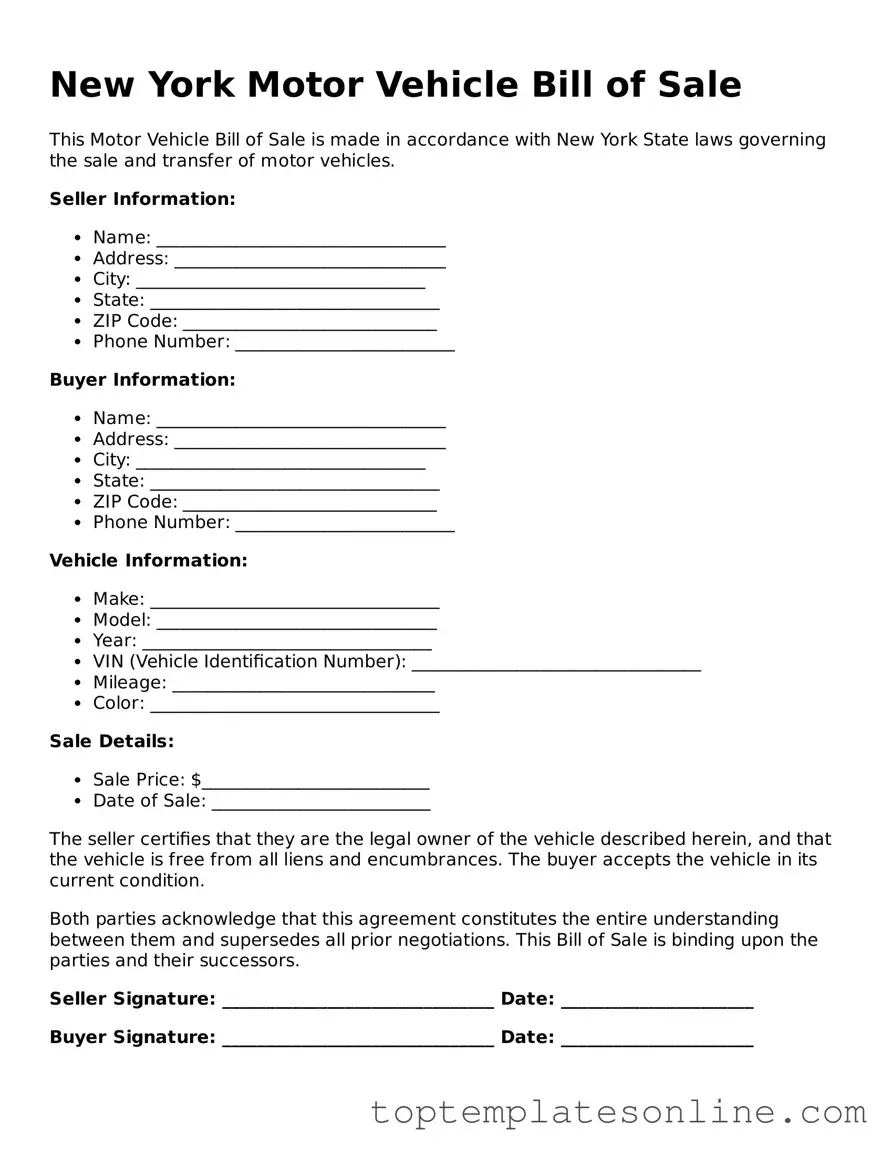Blank Motor Vehicle Bill of Sale Template for New York State
The New York Motor Vehicle Bill of Sale form is a legal document used to transfer ownership of a vehicle from one party to another. This form serves as proof of the transaction, detailing essential information such as the buyer, seller, and vehicle specifics. Understanding its importance can help ensure a smooth transfer process and protect the interests of both parties involved.
Customize Motor Vehicle Bill of Sale Here
